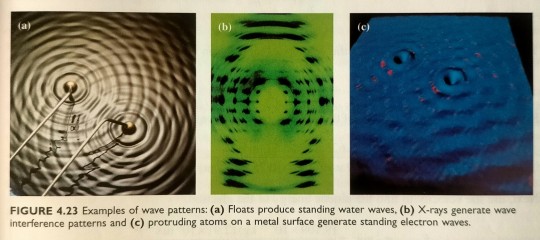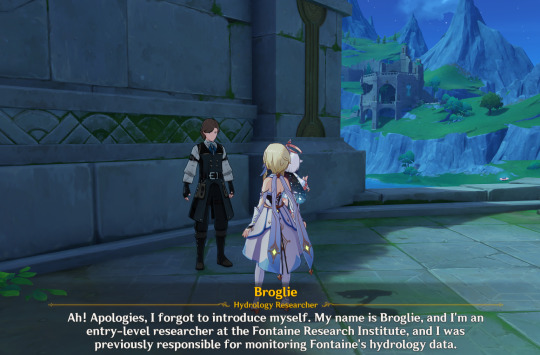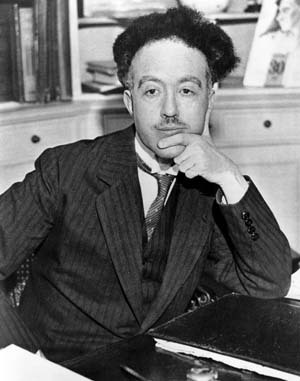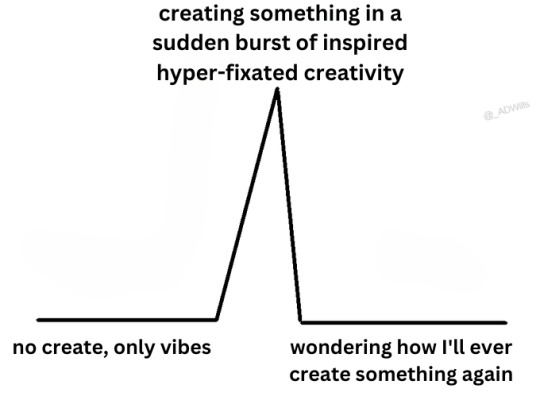#De Broglie wavelength
Explore tagged Tumblr posts
Text

The Science Manuscripts of S. Sunkavally, p 741.
#photosynthesis#de Broglie wavelength#happiness#developmental change#children#self-stabilization#bicycle#insect immune system#globus pallidus#thyroid hormone#iodine#supercooling#antifreezes#latitudinal variation in body size#cerebral injury
0 notes
Text
Chapter 14: Electron Waves
14.1 Introduction to Electron Waves In the early 20th century, it was discovered that not only light exhibits both wave-like and particle-like properties, but also matter, such as electrons, shows dual behavior. This chapter will explore the concept of electron waves and their importance in understanding the quantum nature of particles. 14.2 de Broglie Hypothesis The French physicist Louis de…
View On WordPress
0 notes
Text
Figure 4.23 shows examples of the characteristic intensity patterns displayed by waves. In figure 4.23a, water waves radiate away from two bobbing floats and form a standing pattern. In figure 4.23b, diffracted X-rays form a similar wave pattern. (...) Both experiments generated patterns like those shown in figure 4.23b, confirming the validity of the de Broglie equation for electron wavelengths. (...) In recent years, scanning tunnelling electron microscopes have produced images of electron waves, an example of which appears in figure 4.23c. Here, two atoms on an otherwise smooth metal surface act like the floats in figure 4.23a, and cause the electrons in the metal to set up a standing wave pattern.

"Chemistry" 2e - Blackman, A., Bottle, S., Schmid, S., Mocerino, M., Wille, U.
#book quotes#chemistry#nonfiction#textbook#waves#wave pattern#water waves#diffraction#x ray#interference pattern#experiment#clinton davisson#lester germer#george thomson#physicists#louis de broglie#electron#wavelength
2 notes
·
View notes
Text

1 note
·
View note
Text


Genshin reference to Louis de Broglie, french physicist who did amazing work in quantum mechanics, theorectically demonstrating the wave-particle duality of matter. As in "de Broglie wavelength". Love to see it!
#genshin#genshin impact#fontaine#genshin fontaine#broglie#de broglie#quantum mechanics#quantum physics#wave particle duality#physics
26 notes
·
View notes
Text
NEET 2024 Physics Questions | De Broglie Wavelength Questions for NEET #neetphysics #neet2024
https://youtu.be/I-4w5chUbp8
3 notes
·
View notes
Text
sigh. looks like i need to understand de Broglie wavelengths and standing waves before i can get Bohr's model because that's where h/2*pi comes from... i found a video that will come in handy tho (thank god for the internet and youtube).
it's a long way to quantum numbers... how did they expect us to cover all this (AND understand it) by tomorrow???
at least(??) i've shifted from panicked to resigned (to the fact that i'll go into tutorial still rather clueless [unless a miracle happens lol] and i'll have to spend the rest of the week figuring this out on top of all the other assessments 😭)
somehow it'll all work out... also, i really hate to have to do this THIS early in the challenge but i tried listening to the next chapter of the cs50x lecture i've been working on and i just can't comprehend - it's late and i should sleep. i have to skip today.
#chemblr#studyblr#physics#quantum mechanics#100 days of code#this was supposed to be day 4#unsolicited update#stemblr#stem student#stem academia
6 notes
·
View notes
Text
Maybe I don't understand it at all (probably) but isn't the collapse of the wave function & the de broglie wavelength & all that just explained by the wave function not representing an actual literal wave. Is that wrong & if not why doesn't anyone explain it like that
2 notes
·
View notes
Text
My de Broglie wavelength riding the high 😎

158K notes
·
View notes
Text
Important Chapters and Topics to Rank Higher In JEE, JEE Main 2024 Preparation
The Joint Entrance Examination (JEE) Main is a gateway to some of the most prestigious engineering colleges in India. As JEE Main 2024 approaches, it becomes crucial for aspirants to have a strategic approach to their preparation. In this comprehensive guide, we will delve into the important chapters and topics that can significantly impact your JEE Main 2024 ranking. Moreover, we will explore how Modulus Academy, a leading coaching institute, can be a guiding force to elevate your preparation and help you crack the code to success.
Mathematics: The Bedrock of JEE Main:
Algebra:
Quadratic Equations and Expressions: A thorough understanding of solving quadratic equations and manipulating expressions is fundamental. This lays the groundwork for more complex algebraic concepts. Complex Numbers: Proficiency in dealing with complex numbers, operations, and applications is vital for success in JEE Main mathematics.
Calculus:
Limits and Continuity: These are foundational concepts for calculus. A clear understanding of limits and continuity is essential for grasping derivatives and integrals effectively. Differential Equations: Mastery in solving differential equations is crucial. This chapter often forms a significant portion of the calculus section in the JEE Main exam.
Coordinate Geometry:
Straight Lines and Circles: The equations of lines and circles are fundamental to coordinate geometry. A strong command over these concepts is necessary for solving problems in this section.
Trigonometry:
Trigonometric Functions and Identities: Trigonometry forms a substantial part of the JEE Main mathematics syllabus. Understanding trigonometric functions and identities is key for solving problems related to triangles and circular motion.
Physics: Unlocking the Laws of Nature:
Mechanics:
Newton's Laws of Motion: A strong grasp of classical mechanics is crucial. Newton's laws form the basis for understanding motion, forces, and equilibrium. Work, Energy, and Power: Concepts related to work, energy, and power are not only fundamental but are also frequently tested in the JEE Main exam.
Electromagnetism:
Electrostatics and Magnetism: Understanding the principles of electrostatics and magnetism is crucial for solving problems related to electric and magnetic fields. Electromagnetic Induction: Concepts like Faraday's Law are significant in this section and require a thorough understanding.
Optics:
Ray Optics and Wave Optics: Optics explores the behavior of light. A strong understanding of the laws of reflection and refraction, interference, and diffraction is essential for success in this section.
Modern Physics:
Dual Nature of Matter and Radiation: Concepts such as the wave-particle duality, photoelectric effect, and de Broglie wavelength are integral to this section. Atomic and Nuclear Physics: Knowledge of atomic structure, radioactive decay, and nuclear reactions is vital for tackling questions in this category.
Chemistry: Balancing Theory and Application:
Physical Chemistry:
Chemical Thermodynamics: Understanding concepts like entropy, enthalpy, and Gibbs free energy is crucial for solving problems in thermodynamics. Chemical Kinetics: This chapter focuses on reaction rates and mechanisms, requiring a clear understanding of the underlying principles.
Organic Chemistry:
Hydrocarbons: A solid understanding of different types of hydrocarbons and their reactions is essential. Topics like alkynes, alkenes, and aromatic hydrocarbons are frequently tested. Organic Compounds Containing Oxygen: This includes understanding the properties and reactions of alcohols, phenols, and ethers.
Inorganic Chemistry:
Coordination Compounds: Coordination chemistry of transition metals is explored in this chapter. Understanding ligands, coordination numbers, and isomerism is crucial. P-Block Elements: Knowledge of the properties and reactions of elements in the p-block is vital for this section.
Strategic Preparation with Modulus Academy:
Comprehensive Curriculum:
Modulus Academy stands out for its comprehensive curriculum that aligns with the JEE Main syllabus. The institute ensures that students receive a holistic understanding of each subject, emphasizing both conceptual clarity and practical application.
Experienced Faculty:
The faculty at Modulus Academy comprises experienced educators with a proven track record in JEE Main coaching. Their expertise extends beyond textbooks, incorporating real-world applications and effective problem-solving strategies.
Focus on Problem-Solving:
Modulus Academy places a strong emphasis on developing problem-solving skills. Regular practice sessions, problem-solving workshops, and discussions contribute to honing the analytical abilities of students.
Regular Assessments and Mock Tests:
The academy follows a systematic approach to assessments, conducting regular tests and mock exams. This practice allows students to gauge their progress, identify areas for improvement, and acclimate to the exam's time constraints.
Individualized Attention:
Recognizing the diverse learning styles of students, Modulus Academy maintains smaller batch sizes to provide individualized attention. This approach fosters an environment where students can actively engage with the material and seek personalized guidance.
Technology Integration:
Modulus Academy integrates modern teaching methodologies, including the use of technology, to make the learning process more engaging. Interactive sessions, online resources, and multimedia aids enhance the overall educational experience.
Strategic Study Material:
The study material provided by Modulus Academy is strategically designed to align with the JEE Main exam pattern. It includes comprehensive textbooks, practice papers, and reference materials that cater to the diverse needs of students.
Tips for Effective Preparation:
Create a Study Schedule:
Devise a study schedule that allocates sufficient time to each subject and topic. Prioritize weaker areas while ensuring regular revision of stronger sections.
Practice Regularly:
Practice is key to success in JEE Main. Regularly solve problems, attempt mock tests, and participate in practice sessions to reinforce your understanding and improve problem-solving skills.
Seek Clarifications:
Don't hesitate to seek clarifications on doubts. Whether through peer discussions, faculty interactions, or online forums, resolving queries promptly ensures a solid foundation in each subject.
Time Management:
Develop effective time management skills. Practice solving problems within the stipulated time frame to simulate exam conditions and improve your ability to tackle the JEE Main paper within the allocated time.
Stay Updated with Exam Patterns:
Keep abreast of any changes in the JEE Main exam pattern or syllabus. Stay updated with official notifications and adjust your preparation strategies accordingly.
Conclusion: Mastering JEE Main 2024 with Modulus Academy:
In conclusion, success in the JEE Main 2024 requires a strategic approach that prioritizes key chapters and topics. Modulus Academy, with its comprehensive curriculum, experienced faculty, and strategic teaching methodologies, stands as a beacon for aspiring engineering students seeking to elevate their JEE Main preparation. By focusing on the essential subjects and leveraging the guidance provided by Modulus Academy, you can navigate the complexities of the exam with confidence and increase your chances of securing a top rank. Best of luck on your JEE Main 2024 journey!
0 notes
Video
youtube
Class 11 Chemistry Chapter No - 2 NCERT Exercise Question No - 32
Question 2.32: Show that the circumference of the Bohr orbit for the hydrogen atom is an integral multiple of the de Broglie wavelength associated with the electron revolving around the orbit.
0 notes
Text

The Science Diaries of S. Sunkavally. Page 144.
#manuscript#theoretical biology#circulation#erythrocyte stacking#aluminum#alpha particle#zinc#leaching#iron pail#rhodopsin#night vision#lasers#value of Pi#De Broglie wavelength#uncertainty#handwriting#calligraphy#notebooks#diaries
0 notes
Text
Wave-Particle Duality
Introduction Wave-particle duality is a key principle in quantum mechanics that proposes that all particles exhibit both wave and particle properties. This concept is a fundamental departure from classical physics, where particles and waves are separate entities. De Broglie Hypothesis The concept of wave-particle duality was first introduced by Louis de Broglie in 1924. He proposed that every…
View On WordPress
0 notes
Text
Modern Physics Class 12
Bohr's Atomic Model Class 12 Physics | Bohr's all Postulate NEET CBSE IIT JEE Main bohr atomic model, bohr atomic model class 11, bohr atomic model class 12, bohr atomic model in hindi, bohr atomic model atomic structure, bohr atomic model …
Drawbacks of Rutherford Atomic Model | Class 12 Physics IIT JEEMains NEET drawbacks of rutherford atomic model, drawbacks of rutherford atomic model class 11, rutherford atomic model postulates and drawbacks, write any two drawback…
Rutherford Atomic Model Class 12 Physics IIT JEEMains NEET CBSE | Atomic Structure Class 11 rutherford atomic model, rutherford atomic model class 11, rutherford atomic model class 12, rutherford atomic model in hindi, rutherford atomic model experi…
Bragg's Law Derivation Class 12 Physics IIT JEEMains NEET CBSE NCERT | Bragg's Equation bragg's law, bragg's law derivation, bragg's law in hindi, bragg's law in solid state physics, bragg's law and its derivation, bragg's law and equation, stat…
Davisson And Germer Experiment Class 12 Physics Concept| Modern Physics NEET IIT JEE CBSE NCERT davisson and germer experiment, De Broglie Hypothesis Class 12, davisson and germer experiment class 12, davisson and germer experiment applied physics, davi…
Derivation of De Broglie Equation Class 12 Physics IIT JEEMains NEET CBSE | De Broglie Wavelength derivation of de broglie equation, derivation of de broglie equation class 11, derivation of de broglie equation class 12, de broglie equation and derivation…
0 notes
Video
PHYSICS CONCEPTS; TSIOLKOVSKY ROCKET EQUATION; DE-BROGLIE WAVELENGTH; AR...
0 notes
Text
The de Broglie Equation: Exploring the Wave-Particle Duality of Matter
The de Broglie equation, also known as the matter-wave equation, is a fundamental equation in quantum mechanics that relates the wave-like properties of matter to its particle-like properties. It was first proposed by French physicist Louis de Broglie in 1924 and represents a key development in our understanding of the dual nature of matter.
The equation states that every particle in the universe has a wave associated with it, with the wavelength of the particle given by Planck's constant divided by the particle's momentum. This concept has far-reaching implications in the fields of physics and chemistry, providing a foundation for understanding the behavior of atoms, molecules, and subatomic particles. The de Broglie equation has been used to explain a variety of phenomena, from the diffraction of electrons to the behavior of superconductors.
0 notes